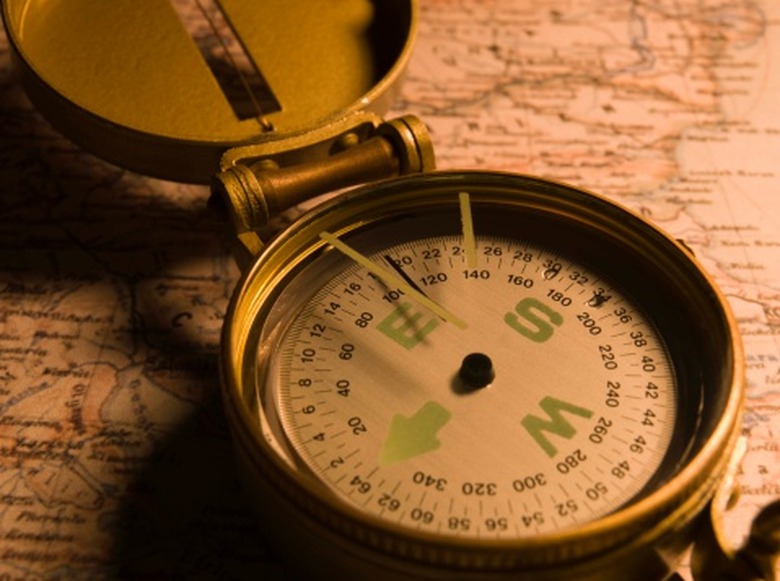How To Read An Engineer Compass
A compass is a floating magnetic needle that always points toward a magnetic north pole. Use a compass to explore, navigate, map terrain and travel around the world. According to United States Army Corps of Engineers, the engineer compass is also called a lensatic compass. Use the engineer compass to find the direction by lining up the compass with an object. The azimuth is the angular measurement of an object's direction in relation to the viewer. Use the engineer compass to measure the azimuth to take a bearing or direction.
Step 1
Open the engineer compass until the cover is 90 degrees to the compass case. Tilt the lens bracket approximately 30 degrees from the perpendicular position of the compass. Check that the dial is floating freely.
Step 2
Place your thumb in the loop on the side of the compass. Hold the compass level by your thumb and index finger. Raise the compass up to your eye.
Step 3
Line up the sighting groove in the bracket with the wire and an object in the distance. Keep your head still and then read the azimuth through the lens bracket. Note the red number on the dial, which is the degrees under the black index line on the compass face.
Step 4
Open the compass completely and hold it level in front of you. Turn the compass in a horizontal manner until the azimuth is directly beneath the black index line on the face. Rotate the bezel on the face of the compass until the indicator is directly over the "north" position (indicated by an upper case "N").
TL;DR (Too Long; Didn't Read)
Hold a compass level and steady to prevent the needle from touching the sides of the globe or the dial face.
Face the object that you want to measure using the engineer compass.
Do not move your head, but raise and lower your eyes when taking the azimuth using an engineer compass.
Avoid magnetic fields from magnets, electrical appliances, iron or automobile engines. Sometimes even a metal belt buckle can interfere with a compass, which can result in an incorrect reading.
Warning
Always double check your compass readings.
When hiking, use a map to help you navigate unfamiliar terrain.
Cite This Article
MLA
Reichert, Robin. "How To Read An Engineer Compass" sciencing.com, https://www.sciencing.com/read-engineer-compass-8606205/. 13 March 2018.
APA
Reichert, Robin. (2018, March 13). How To Read An Engineer Compass. sciencing.com. Retrieved from https://www.sciencing.com/read-engineer-compass-8606205/
Chicago
Reichert, Robin. How To Read An Engineer Compass last modified March 24, 2022. https://www.sciencing.com/read-engineer-compass-8606205/
